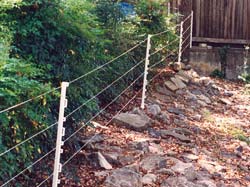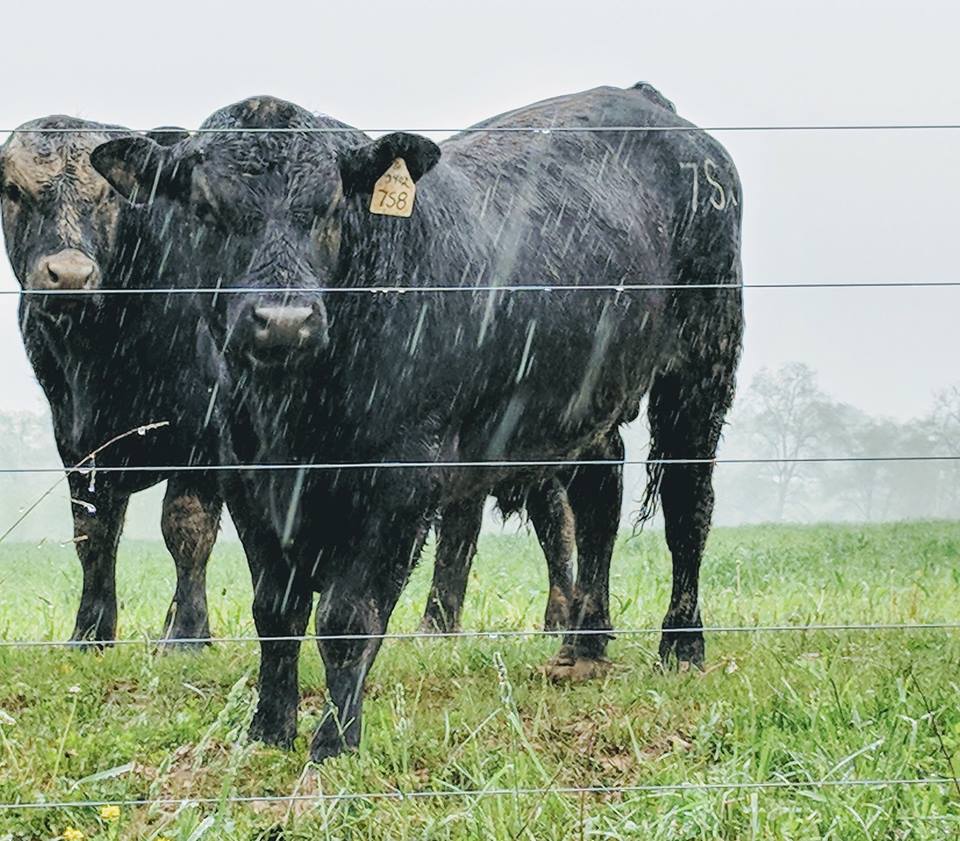Cyclops Electric Fence Chargers and Energizers Information Hub
What is POLY WIRE Electric Fencing? Best Temporary Fencing
Posted by Cyclops Electric Fence on
Polywire is a very useful product that most landowners can utilize for paddock divisions, strip grazing, etc. But the fine, metal conductors in polywire and polytape products create a very high resistance to current flow. Therefore, don’t depend on it for long runs. Use six-strand and nine-strand polywire with stainless steel conductors for temporary fencing. Six-strand polywire has a resistance of 9,700 ohms per mile, and three-strand polywire has a resistance of 16,000 ohms per mile.
Electric Fence wire splices and connections | How to advice
Posted by Cyclops Electric Fence on
When making permanent connections in electrical fences, make sure that the joins make good electrical connections. One loose connection can equal a resistance of 500 ohms, and a few loose connections can cause a significant voltage drop. Use good-quality crimp sleeves, crimped with the proper crimping tool, to make electrical connections. A round, hard material such as high-tensile wire does not make a good electrical connection when wrapped back around itself. Therefore, avoid knots and wraps unless the person constructing the system has the ability to make tight wraps. Too many graziers depend upon their energizers being able to...
Tips on Installing Electric Fence
Posted by Cyclops Electric Fence on
People installing electric fences often make the mistake of pulling the wire too tight. Pulling the wire tight requires big corner posts and braces that are overkill for one-wire and two-wire fences. Only tighten wires enough to take most of the sag out of them. Along woodlands where trees or branches might fall on fences, it is a good idea to include tension springs to add some “give” to the fences. Consider using tension springs where deer traffic is heavy. Springs could prevent some damages to fences and also save the inconvenience of having livestock escape before the damaged fences...
Electric Fence Basics | Electrical stuff you should understand
Posted by Cyclops Electric Fence on
Some helpful electric fence terms Watts: Units of electrical rate of doing work (similar to how horsepower is a physical rate of doing work). One horsepower can lift 1 pound vertically at the rate of 550 feet per second, or heat 1 pound of water at the rate of 0.7 degrees Fahrenheit (0.39 degrees C) per second. 46 watts equals 1 horsepower. Therefore, 746 watts can lift 1 pound at the rate of 550 feet per second, or heat 1 pound of water at the rate of 0.7 degrees Fahrenheit per second. A flow rate of 1 amp at a...
Safety Considerations around electric fence | Cyclops fence chargers
Posted by Cyclops Electric Fence on
Here are some safety considerations to follow when installing electric fencing: 1. Only connect one energizer to a fence; 2. Under unusual fault conditions electric fences can produce sparks. Therefore, keep fences away from combustible materials.When droughts and other conditions create a high risk of wildfires, operate energizers on low power if they are equipped with that option, or simply turn energizers off. 3. Grounds for energizers should be at least 65 feet from utility grounding fields; 4. Avoid running fences parallel to power lines, and try to install fences so that they cross power lines at right angles. If...





